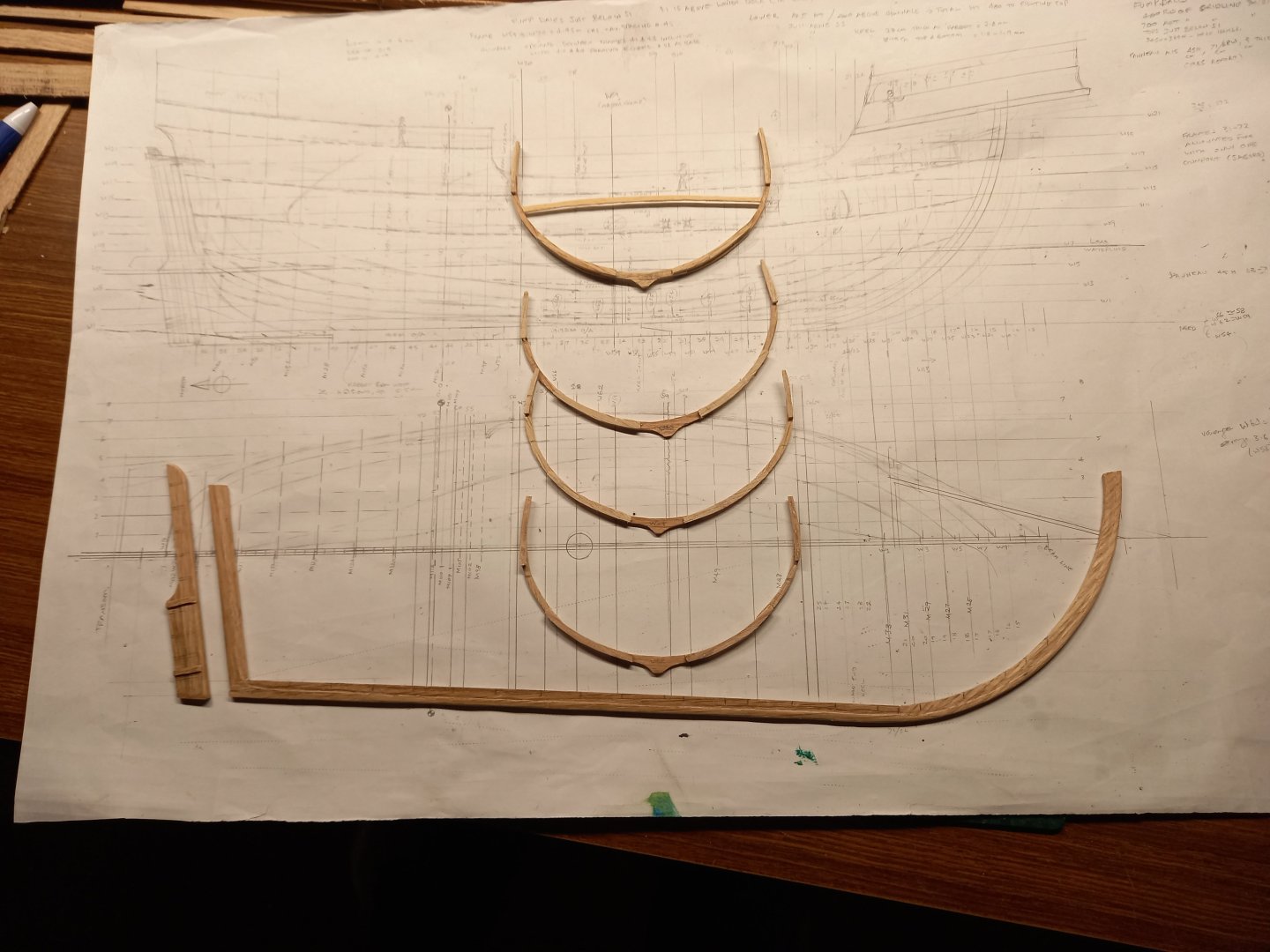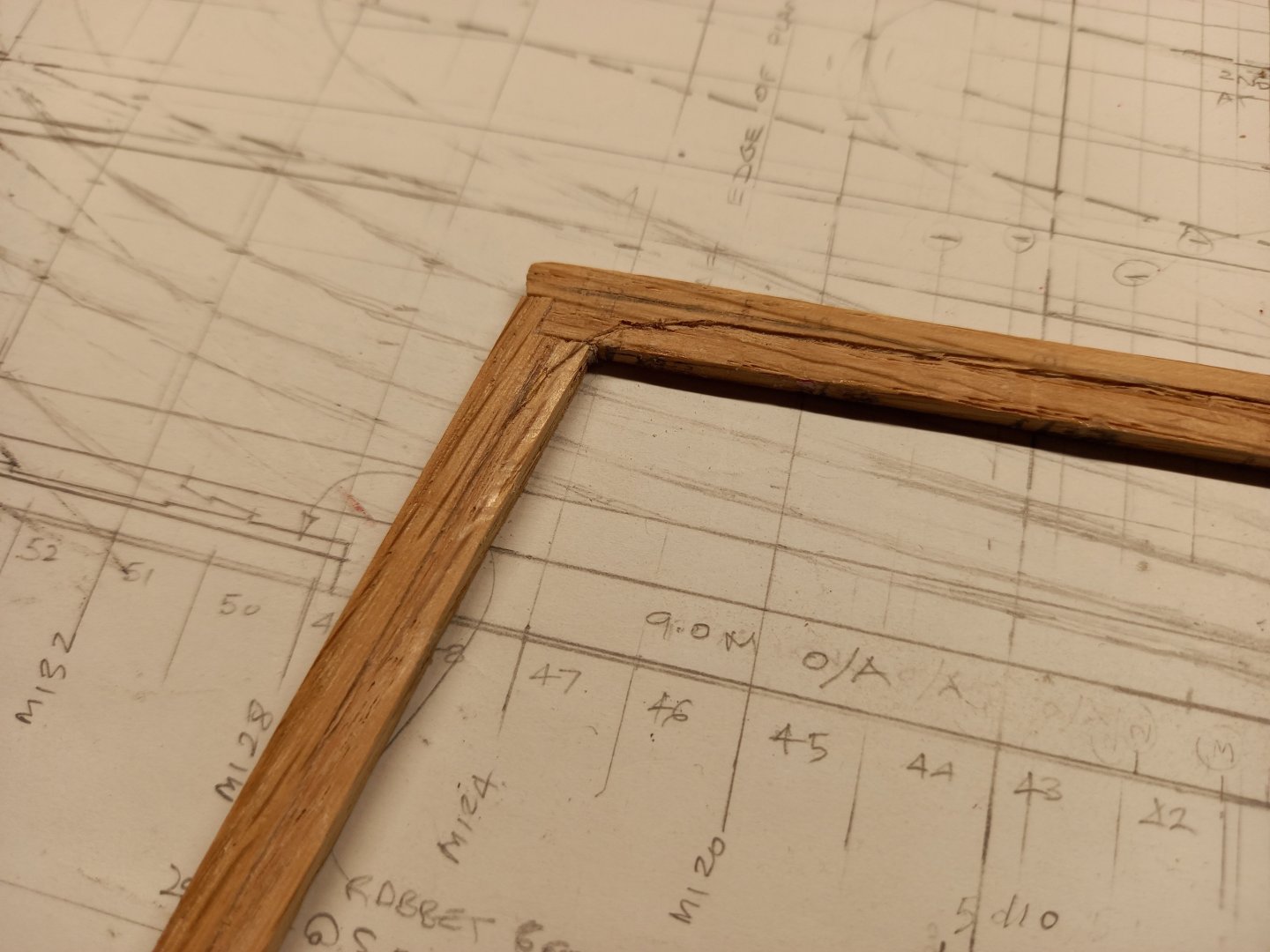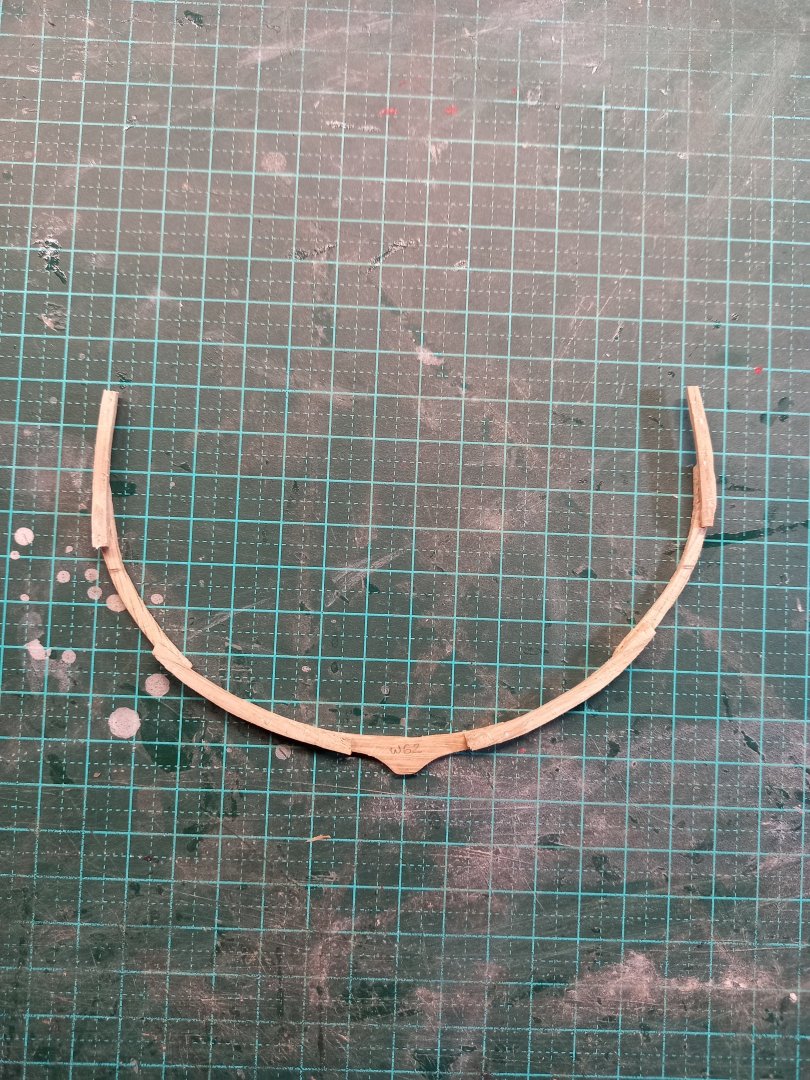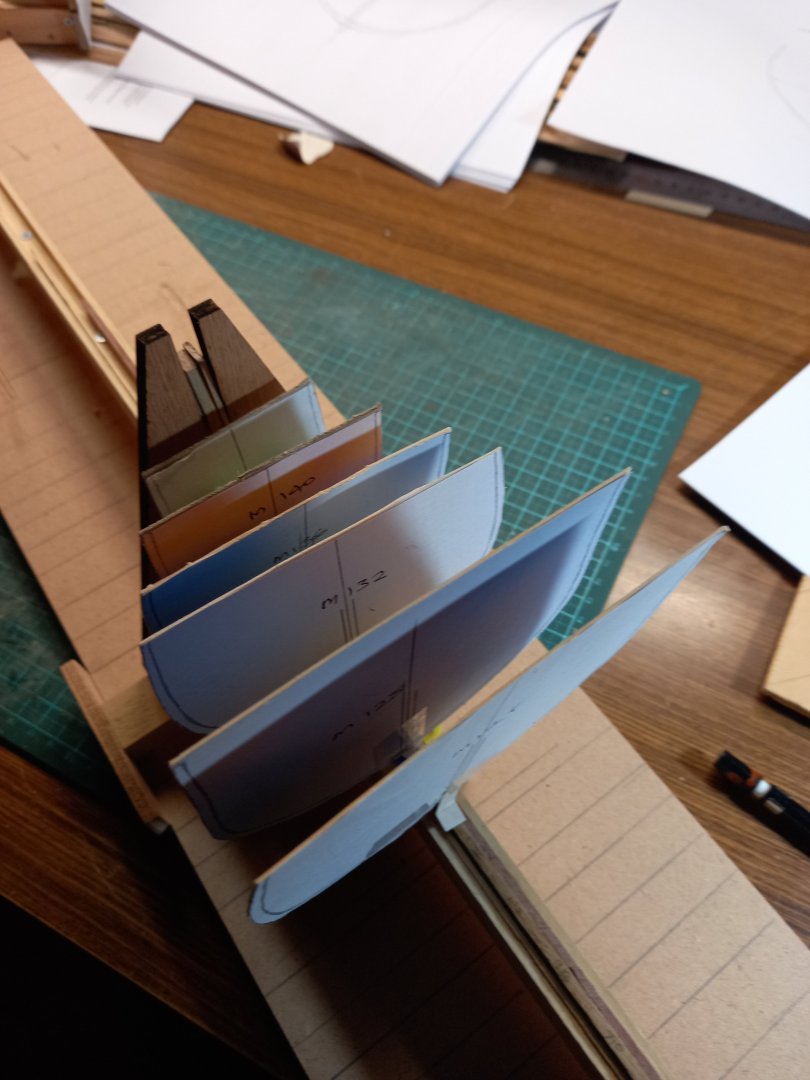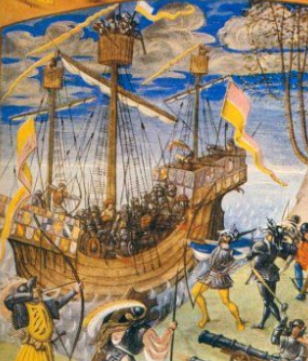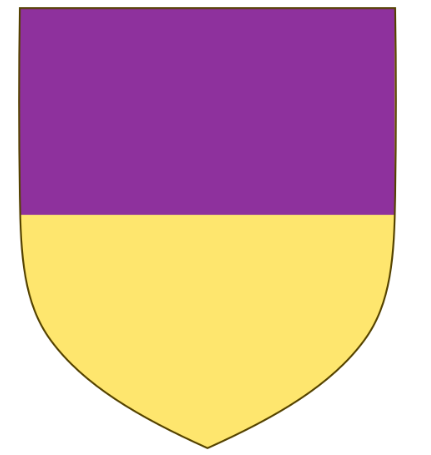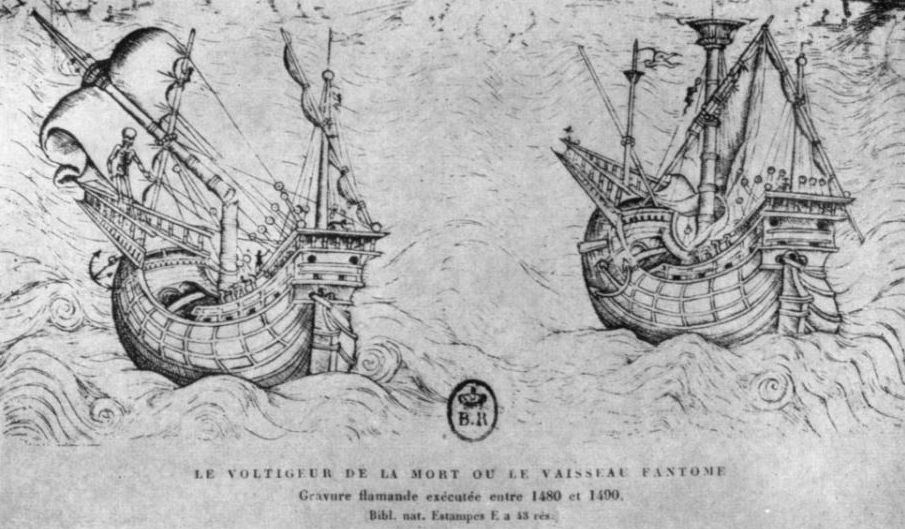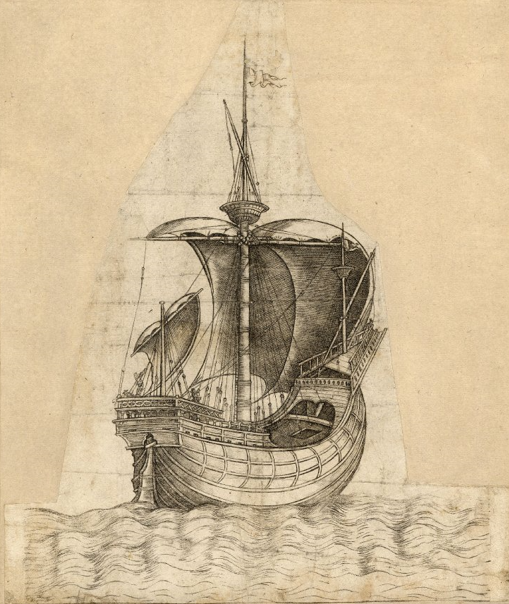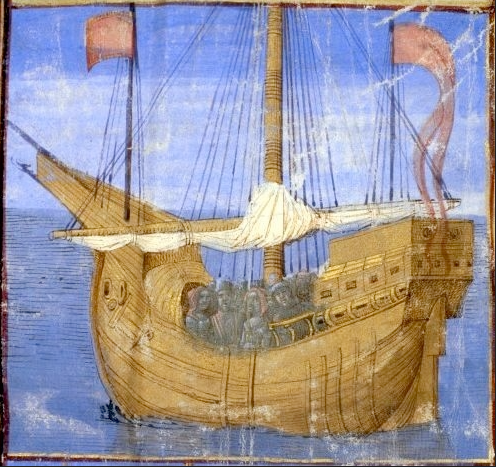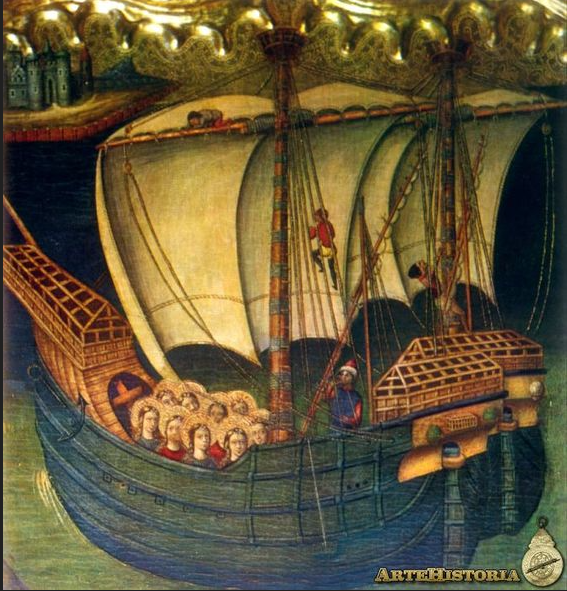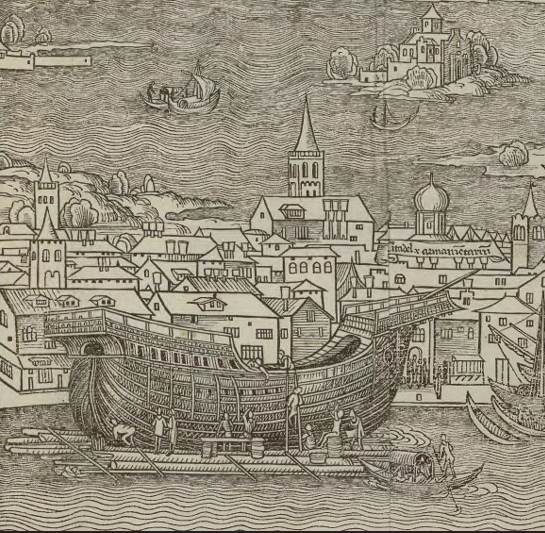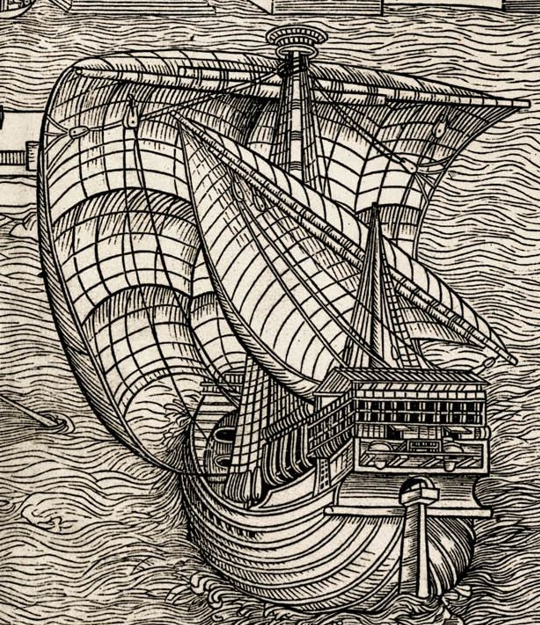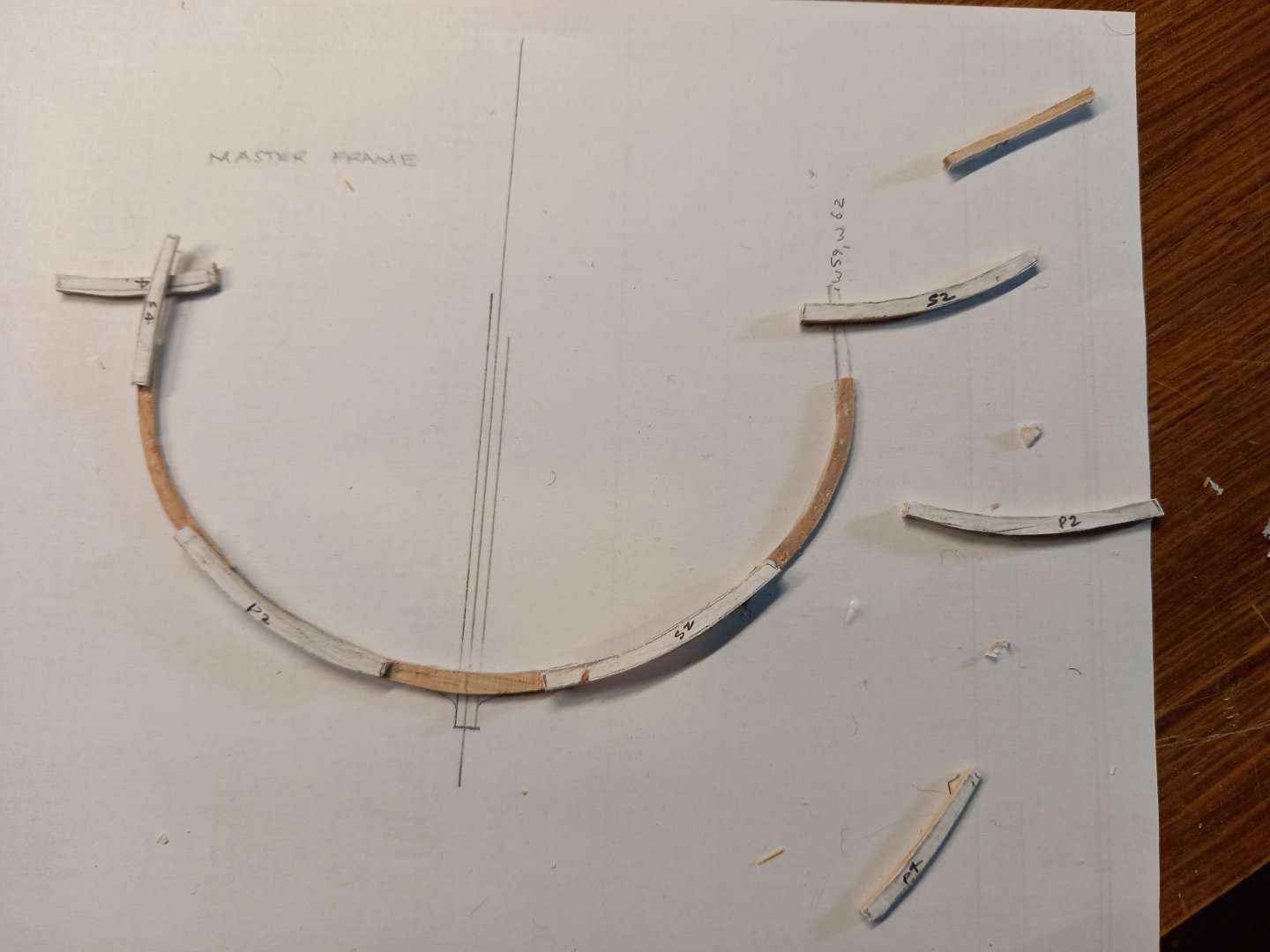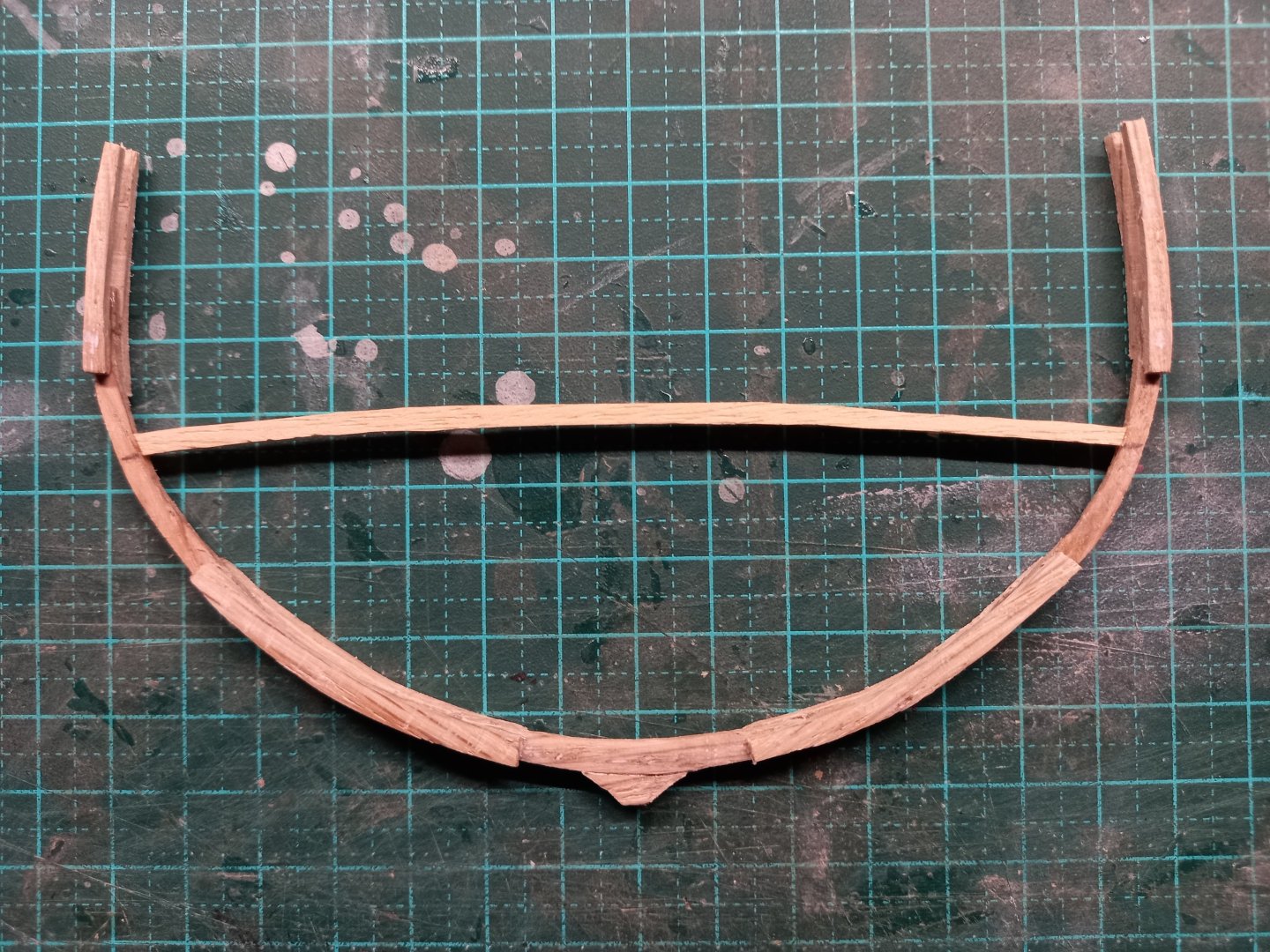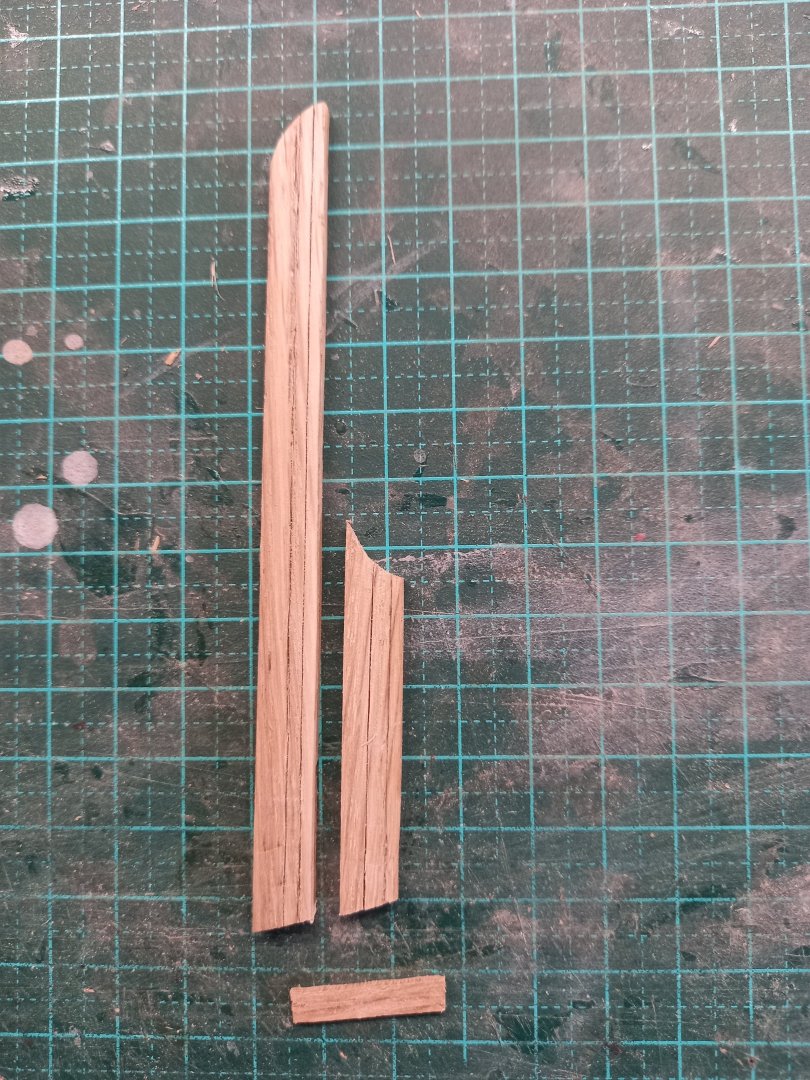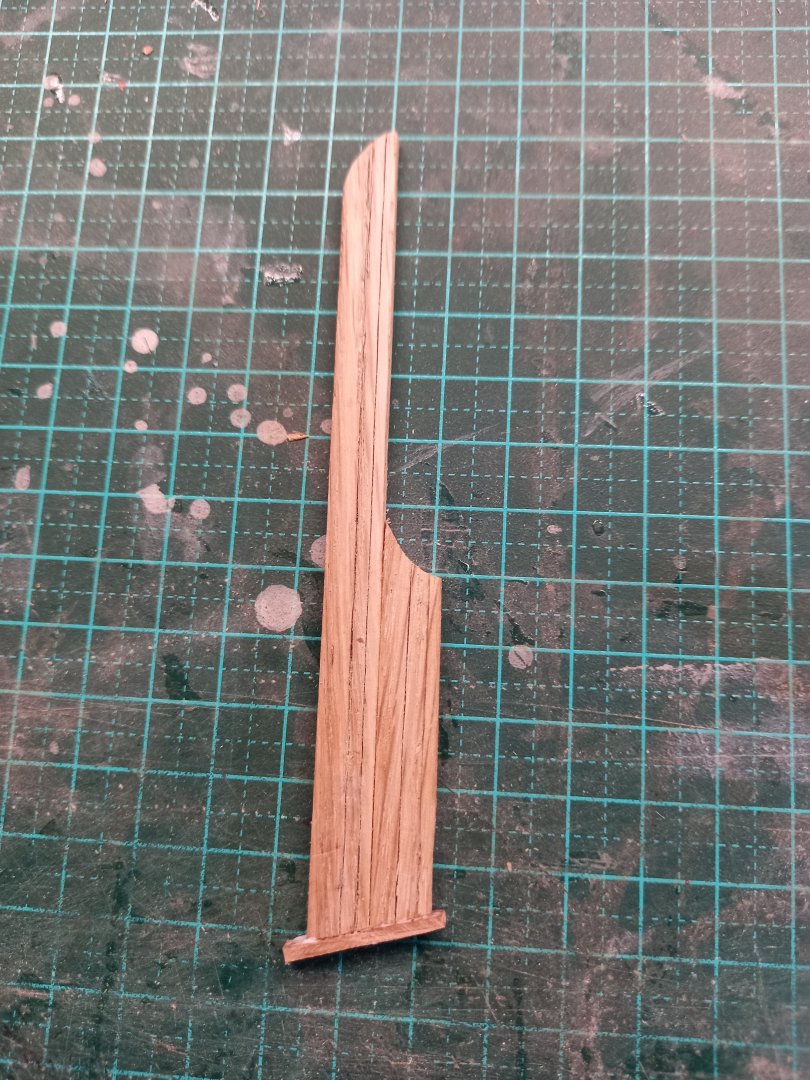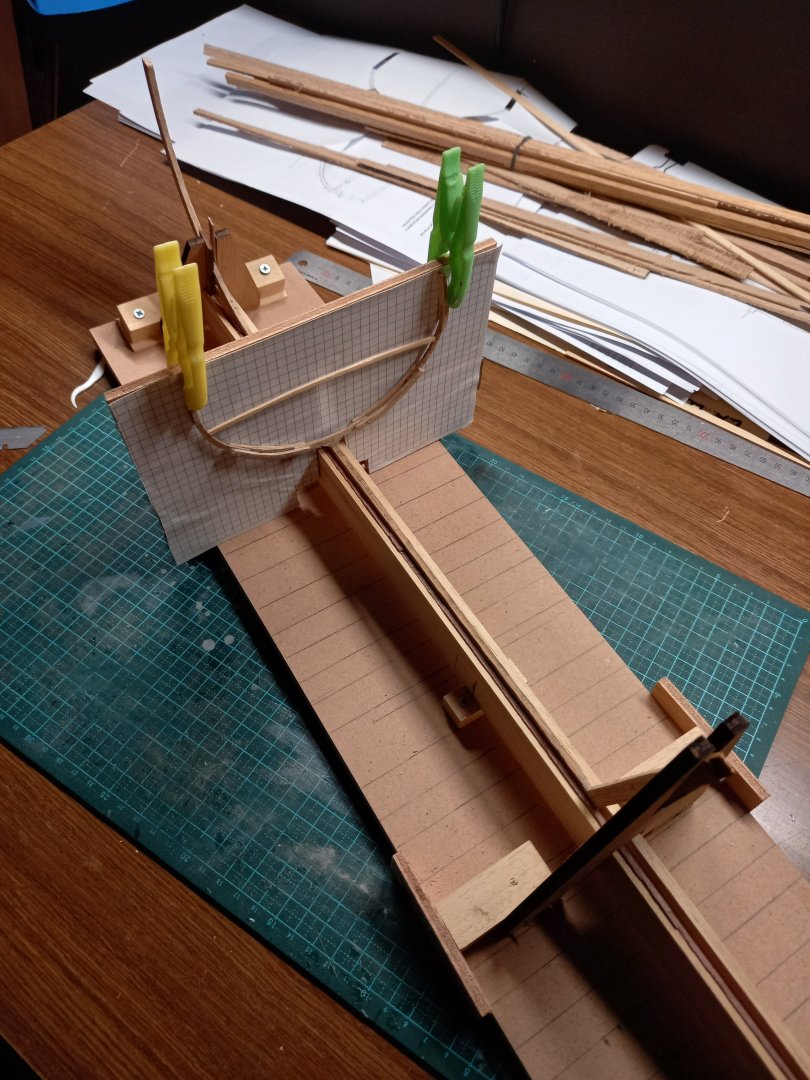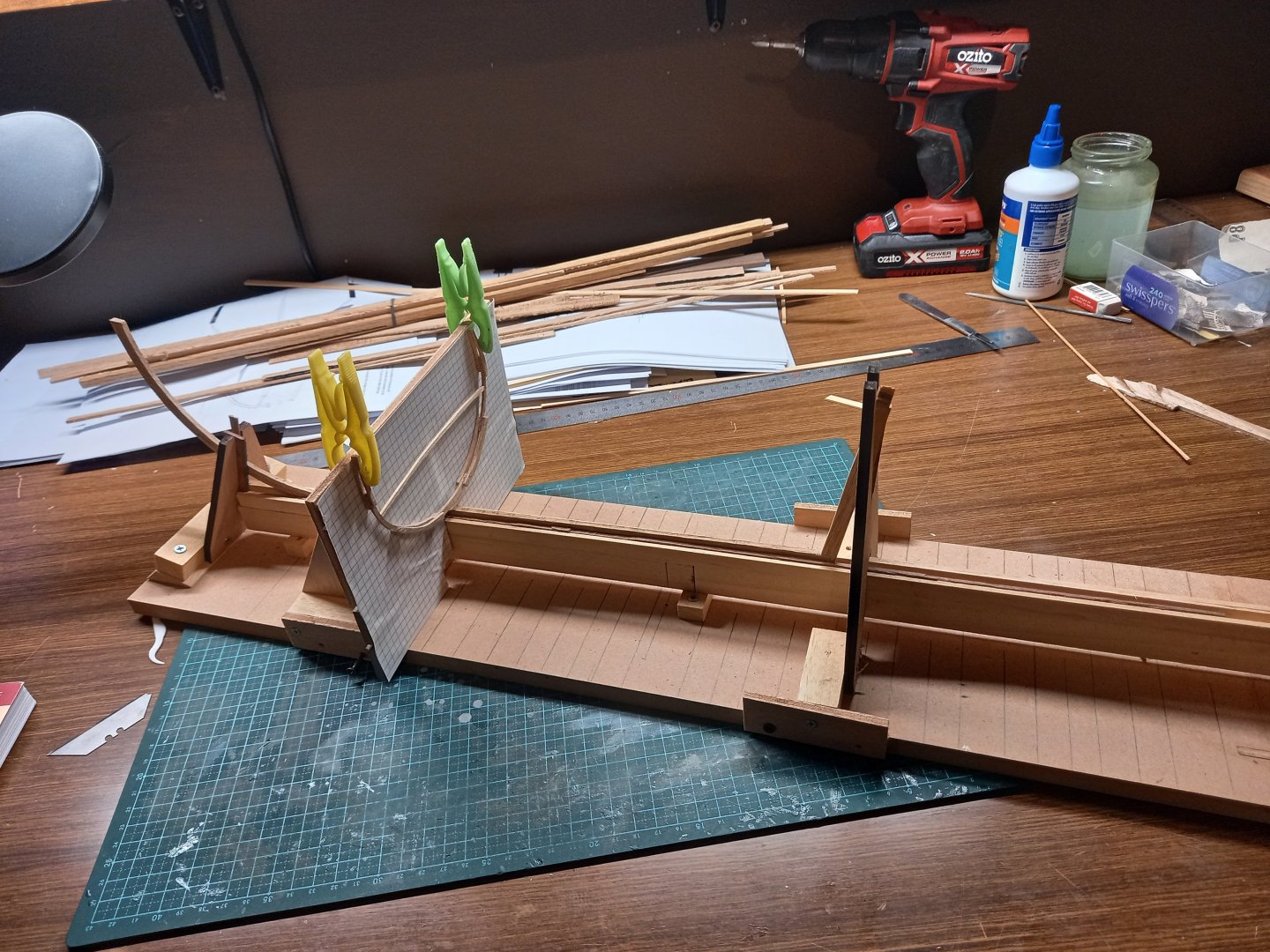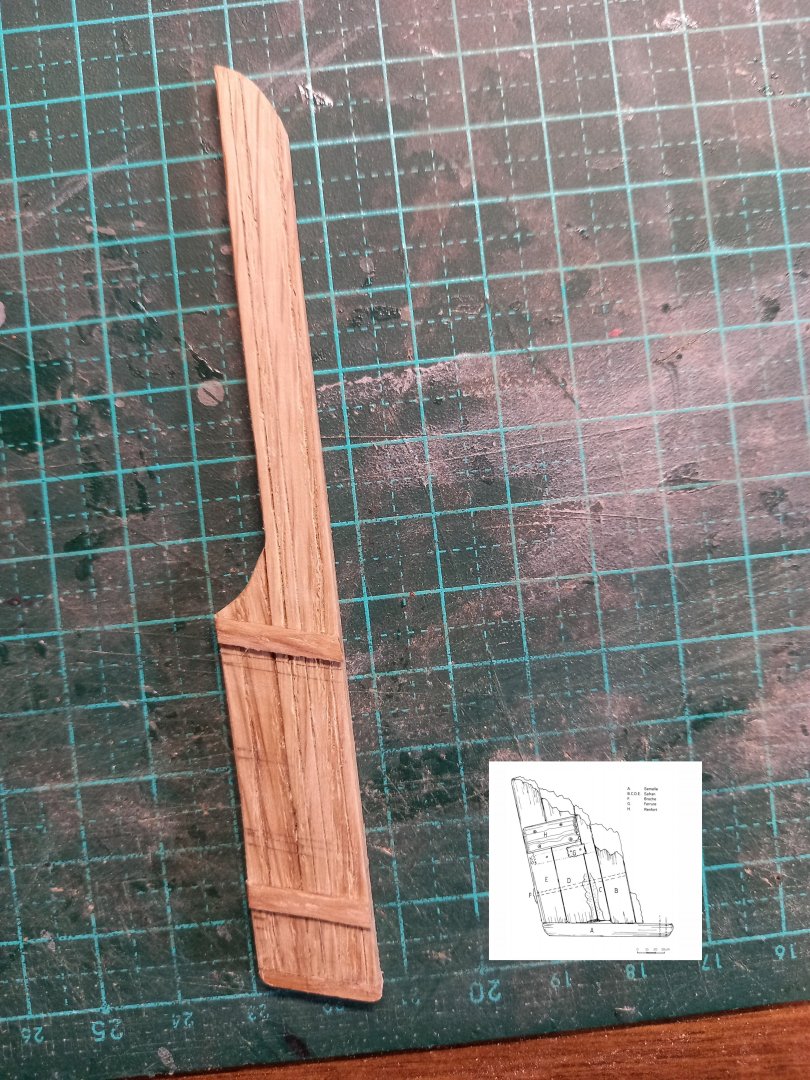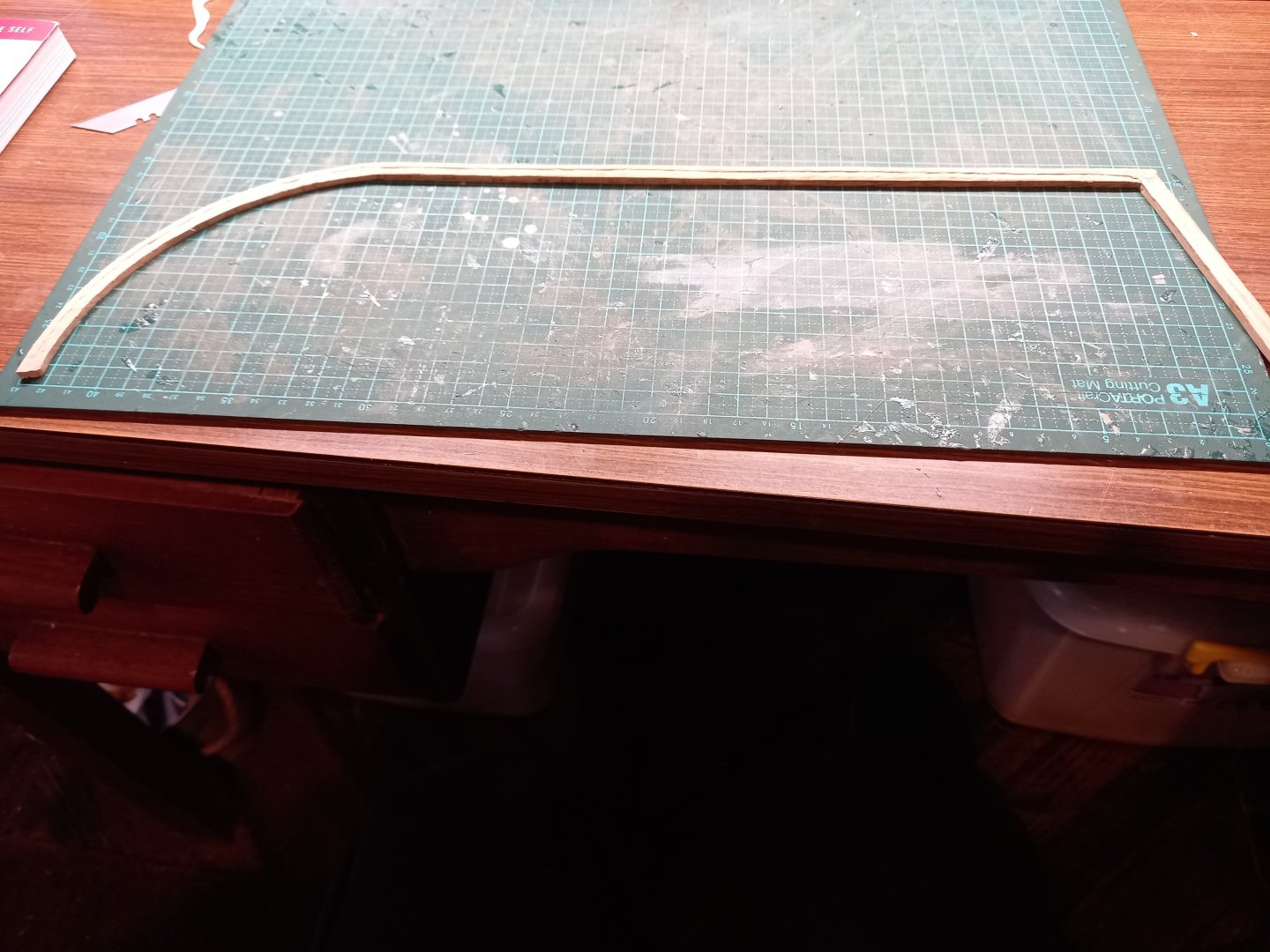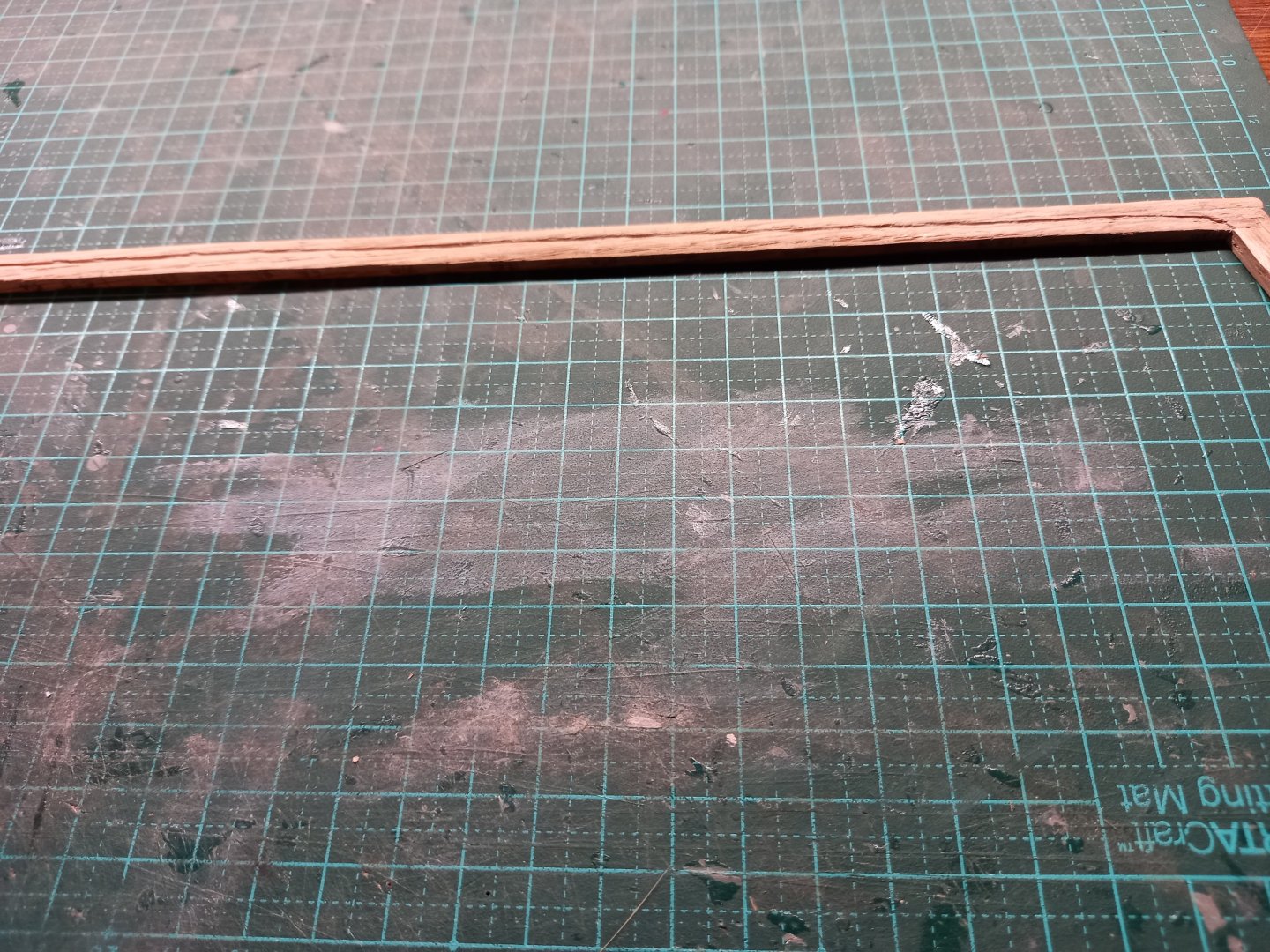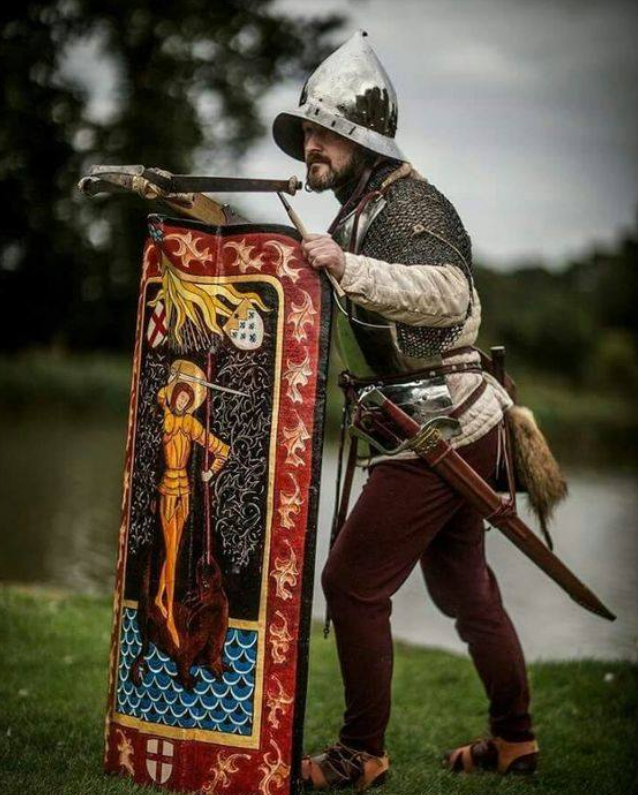-
Posts
7,986 -
Joined
-
Last visited
Content Type
Profiles
Forums
Gallery
Events
Everything posted by Louie da fly
-
Oh, yes! I'm duplicating the frame spacing on the original. The distance between centres is about 500mm (a bit over 1 ft 6 in). The planking is actually fairly thin in the grand scheme of things. Ten to 12 cm ( 3 to 5 inches) except on the upper works, where they are about 4 cm (about one and a half inches) thick. That translates at 1:100 scale as 1.0 to 1.2 mm (1/25 to 1/20 inch) and 0.4mm (1/60 inch). Steven
-
More on the Lomellina - The rabbet carved into the keel, curved at the corner where the keel joins the sternpost. Oak really isn't a terribly suitable wood for this work. And the keel with rudder and four frames. Only 84 frames to go! Because of a design conflict between the archaeological finds and the recent theoretical reconstruction, I'd thought I needed to move the lower deck downwards , but as it turned out I had the height correct in relation to the frames. But I did have to adjust the deck heights on the sheer plan, and consequently the heights of the gunport and the pump lands, the gunwale etc. All good. Steven
-
Latest update - Sutton Hoo Ships Company January Newsletter - https://mailchi.mp/saxonship/the-sutton-hoo-ships-company-17986272?fbclid=IwY2xjawIKOzhleHRuA2FlbQIxMAABHWz-OYAyJMsA7OzXjhr-CdILiPbR8rD7INDiQXeIdwaQ5P14Vd_O7y7Ybw_aem_p0ziokhDskwNc-IYwqiPow Steven
-
Very true, very true. I've often come across this in my own research, not only relating to ships. I remember a 'fact' bandied about among Anglo-Saxon re-enactors (when I was doing re-enacting) , that King Knut had decreed that all his housecarls (bodyguard) were required to have gold-hilted swords, and another that Anglo-Saxon women liked the Vikings better than their own men because they washed more often and looked after their personal grooming. I tracked these statements down and ended up finding that the source in both cases was something like 200 years after the events were supposed to have happened. Hardly eye-witness accounts. Plenty of other examples. And yes, we also have to take into account the politics involved. People alter the facts to suit their own narrative or push a political agenda. Yes, it happened back then, too. It requires great care not to be led astray, and even then we must usually hedge our conclusions around with so many qualifications that sometimes we feel that we are certain of nothing. In the long run, it's largely educated guesswork, based upon nebulous factoids that may or may not be reliable. But in the long run we have to decide something and go with that. Steven
-
The heat sink would also keep the peg from getting glued to the piece you're working on. Steven
-
Nice one. You might also consider an additional banner - a long triangular pendant being a simplified version with the three main "field" colours of the coat of arms; white, green and gold/yellow - so perhaps green and gold together as two halves of a square by the flagpole, and a long white triangle as the 'fly'. That seems to have been a 'thing' with these flags. Steven
-
Made another frame. They don't take as long to do as I'd feared. I've been concerned about the shapes of the frames at the bow and stern. Because the model is based on a wreck which is very far from complete I'd had to generate its lines from the remnants and from the lines of other ships of the same general time-frame (notably the Mary Rose, God bless 'er), and then use those lines to work out the shapes of the frames, and all this the first time I'd ever tried it, there was a fair bit of uncertainty. What if I've got the shapes wrong? Do all that work making them, waste all that wood - only to find they're wrong? So I cut out their shapes from card and put them (very!) roughly in place on the keel. They seem to work, so I feel better about going ahead with them when the time comes. Steven
-
I went a different way, following up directly via Portuguese heraldry. This seems to have had results. First look at this one - https://en.wikipedia.org/wiki/Portuguese_heraldry That gives a good overview. And mentions that King Manuel I (1495-1521) forbade the use of arms to those who were not of the Portuguese nobility. So if you want a coat of arms and therefore a flag based upon it, you need to be a noble - but I think the noble class would also have been the major shipowners anyway (as I understand it Portugal was very hierarchical). That article provides a link to this: https://en.wikipedia.org/wiki/Livro_do_Armeiro-Mor which contains a section "Princes and Main Houses of Portugal" showing the arms of several noble families, plus a bit of their history and achievements from which you might like to pick one. It even has the arms of Vasco da Gama - hey, why not have the ship belong to him? Certainly a maritime connection there! Steven
-
I'd agree that it would be the owner's flag. If the person was important enough (and presumably a shipowner would be well enough off to be regarded as important) he may well have a coat of arms, and that would be shown on his flag(s). For example, the image of what I believe to be the (first) Lomellina shows the flag of the owners, the Lomellini family, which is an adaptation of their coat of arms. Do you have any particular owner in mind? I'm assuming the ship is Spanish? If so, perhaps look at a few contemporary Spanish merchants'/shipowners' coats of arms. For example https://www.istockphoto.com/vector/heraldry-coats-of-arms-of-spain-gm928877224-254747533 shows a number of non-royal and non-regional coats of arms from Spain (and links to others). I'm assuming the names under the shields are family names, but I'm not sure. Perhaps choose one you like the look of that isn't too difficult to reproduce and use that. If you really want to do it properly, perhaps research the family name and see what they were into and if they lived on the coast? A couple of things - what's the purpose of the weight? I don't see what it's there for. And I'd recommend a multi-tine spear - that seems to have been the thing for fishing - presumably because a fish could wriggle off a single point. Sorry, I realise that means more work for you . . . Steven
-
Yes indeed. Though it's going to be a slow process, I'm afraid. 88 frames to build up out of bits. But I'm not in any hurry. The plan is to make every fourth frame and place them on the keel, then fill in the gaps. I have the positions of the 'one in four' frames marked on the keel in pencil. After a bit of recherche research (sorry, I've just been speaking French for an hour and a half) I think the consensus of the (relatively) reliable pictures is that yes, though the planking curves up at the stern and some of it ends under the counter, much of it it nonetheless butts into the sternpost so it needs a rabbet. Ah well, better to find it out now before I commit myself by gluing any frames to the keel. The sequence of actions is important - I need to make sure I don't paint myself into a corner (in French 'me coincer' - I just learned that one today.) Steven
-
Seriously impressive work, mate! Wonderful to see you're using Anderson as your guide. Extrapolating backwards to allow for the difference in eras can be a problem, but it's really the only option available. Within reason I think we can assume that the earlier we go the simpler rigging becomes. But that's not a hard and fast rule - look at all the crows-feet they used in the 17th century and dropped later as being too unwieldy. You just have to go with what seems to you to be most likely. And nobody without a time machine is going to be able to tell you you're wrong. Steven
-
Tell me about it. It's interesting using the stuff, but I'm not planning to repeat the experiment (and the experience! ) in any subsequent models . . . Mark, thanks for that. I'm still in two minds as to whether to extend the rabbet into the sternpost. Baker sent me some very good stuff from the Mary Rose which I've taken on board, but unfortunately she had a square stern, not a rounded one like earlier carracks, as mine is. OTOH, looking at Carpaccio's superb contemporary renditions of carracks of the time, he seems to show the planking curving upwards, not sideways. However, even Carpaccio seems to have made the occasional error (perish the thought! Say it's not so!). So I'm still considering my options. I'll go through my collection of contemporary images and see if I can work out what's the best way to go. Regarding the roundness or otherwise of the fore edge of the rudder, Baker's info has enabled me to solve it - yes, the Mary Rose had a rounded edge to the rudder. That's good enough for me (and it seems intuitive anyway). Steven PS: Forgot to thank everyone for the likes to the last main post. So thanks, people!
-
Getting close now. Regarding the fishing gear I can't comment on this period with any certainty, but apart from nets (with floats and weights attached, perhaps - depends on the technique they're using - just tossing the net over the side and drawing it back in? Or something a little more sophisticated?) the only other thing I've come across was Byzantine 11th century, a multi-tined 'fork' (it would be a trident if it had only three but there were more). The Serçe Limani "glass wreck" had the following: "The fishing gear found in the Serçe Limani shipwreck in Turkey included nets, spears, sinkers, and spindle-whorls. The shipwreck dates back to the 11th century AD. Fishing gear Nets: Three large nets with floats, a smaller casting net, and beach and open-sea seines Spears: A multi-tined spear Sinkers: Fishing-gear sinkers, some with Christian symbols Spindle-whorls: For making lines Netting tools: Tools for working with nets I tried to find images but couldn't lay hands on them. The article linked below Aha! 7th century AD, but some very nice pictures: https://www.ancientportsantiques.com/wp-content/uploads/Documents/PLACES/Levant/Dor-Galili2010.pdf I don't know if the fishing method would be the same, but it's probably quite likely. Oh, and a set of balances to weigh the fish with. The linked article has pics of (modern - but almost identical to ones found in archaeology) balances to weigh the fish, a fishing spear (and a mosaic of one in use) plus a mosaic of a net being used. It also mentions finds of fish hooks, and pictorial representations of hooks "with and without rods" Have fun with it. Steven
-
I've been away for awhile, so please forgive the longwinded reply - a lot to reply to all in one go, with the fast progress you've been having. Regarding your post #33 of Jan 15 I'm going to (reluctantly) take the role of advocatus diaboli. While I agree that it's quite possible contemporary pics don't show 'permanent" gaskets, it's difficult to draw definite conclusions - the gaskets may be temporary, but maybe the artist just didn't bother to show them. To be able to see the (unused) gaskets hanging down from the yard, firstly it would require a picture of a ship with the sail(s) set. Second you need a very good artist to notice and include such a fiddly detail. And I'm afraid even my favourite, Carpaccio, sometimes gets details wrong. Even he might have missed that detail, particularly of a ship under sail if observing from the shore. Not saying you're wrong. It's quite possible you're correct, just that the evidence is a bit equivocal. But that's not what is shown in the pictures in your post. In each case the yard is considerably above deck level with the gaskets being tied or already tied. OK, enough devil's advocate. On to the rest of the post. Actually, credit for this diagram should go to Woodrat, who generously shared it with me. See the motto in my signature . . . 😁 That's a nice fix for a problem forced onto you by the kit manufacturer, who probably never imagined that anyone would attempt this level of detail and accuracy on their model, and certainly wouldn't have thought through the consequences for sail control caused by the mast placement. You're doing a very good job of this whole build - very workmanlike, and based on thorough research and practical thought. And high quality modelling. Well above the quality you were presented with by the kit. Something to be justly proud of. Steven
-
I've made the master frame - only 87 to go! I had to re-think the floor timber. I had based the frame shapes on a recent paper which showed the shapes of the frames which had been recovered and extrapolated from these to estimate the lines of the ship. I don't fully agree with the author's conclusions - I believe the bow has been made too sharp, so I drew my own lines. But the drawings in this paper didn't show the turn at the bottom of the floor timbers where they join the keel, as found on the actual floor timbers themselves. So having committed myself with this one I had to alter it to add that little extension. You can see the join in the second photo. Note that on the master frame the first and third futtocks are doubled - they overlap the other timbers on both sides - fore and aft of the floor timber. This apples only to the master frame - in all the others, the overlapping futtocks are on the side away from amidships. So on the frames astern of the master frame they are aft of the floor timber, on those forward they are towards the bow. Interestingly, this also occurs on the 13th century Contarina ship, on which my Venetian merchant ship is based, (from info supplied by Woodrat, who made a superb model of the Contarina ship itself). I've cut the rabbet in the keel and stempost. Neither the stempost nor the sternpost were recovered, so they've had to be done by educated guesswork. The angle of the sternpost could be worked out from the joint at the end of the keel, but the stempost was done mostly by eye. The rabbet isn't just a groove - it's a step in the thickness of the keel - thinner above, and shaped below. And it curves upwards at the stern. I've just been thinking - probably the sternpost needs a rabbet as well. Can anybody advise on this? The archaeologists recovered a fragment of the rudder (very unusual for ships of this period), and provided a drawing with precise dimensions. So I was able to reconstruct it based on this, plus contemporary pictures, plus some educated guesswork. The blade of the rudder was made out of several planks. I simplified things a bit, using larger pieces and scribing lines to show the edges of the planks. I'm getting a bit better with delicate work in oak, but it's not easy. And here's the completed rudder, with the drawing of the surviving fragment (note, not to quite the same scale) It was only when I put this photo up that I realised I'd got the timber reinforces on the wrong angle - they're supposed to be at right angles to the planks! Not parallel to the sole plate. So, out with the isopropyl alcohol to dissolve the glue and change the angle. Would I be right in thinking that the fore edge of the rudder should be rounded so it can swivel from side to side without any corners to foul the sternpost? And here's the keel and the master frame in my new slipway (with some alterations to help get everything at right angles in all 3 dimensions).
-
They could be pavises - https://en.wikipedia.org/wiki/Pavise Beautiful work, Patrick! And I agree with Druxey - no laser levels back then. And from what I've seen of the real thing, there was a fair bit of bodge going on at the time. 'Yeah, that'll do! Close enough. Who's ever going to know?' Puts my Great Harry in the shade, I'm afraid. Still, mine's quarter the size of yours and based on info from the 60's, before the Mary Rose was ever found. So I'm still happy enough with mine. (What am I saying? I love my Great Harry!) Steven
About us
Modelshipworld - Advancing Ship Modeling through Research
SSL Secured
Your security is important for us so this Website is SSL-Secured
NRG Mailing Address
Nautical Research Guild
237 South Lincoln Street
Westmont IL, 60559-1917
Model Ship World ® and the MSW logo are Registered Trademarks, and belong to the Nautical Research Guild (United States Patent and Trademark Office: No. 6,929,264 & No. 6,929,274, registered Dec. 20, 2022)
Helpful Links
About the NRG
If you enjoy building ship models that are historically accurate as well as beautiful, then The Nautical Research Guild (NRG) is just right for you.
The Guild is a non-profit educational organization whose mission is to “Advance Ship Modeling Through Research”. We provide support to our members in their efforts to raise the quality of their model ships.
The Nautical Research Guild has published our world-renowned quarterly magazine, The Nautical Research Journal, since 1955. The pages of the Journal are full of articles by accomplished ship modelers who show you how they create those exquisite details on their models, and by maritime historians who show you the correct details to build. The Journal is available in both print and digital editions. Go to the NRG web site (www.thenrg.org) to download a complimentary digital copy of the Journal. The NRG also publishes plan sets, books and compilations of back issues of the Journal and the former Ships in Scale and Model Ship Builder magazines.




